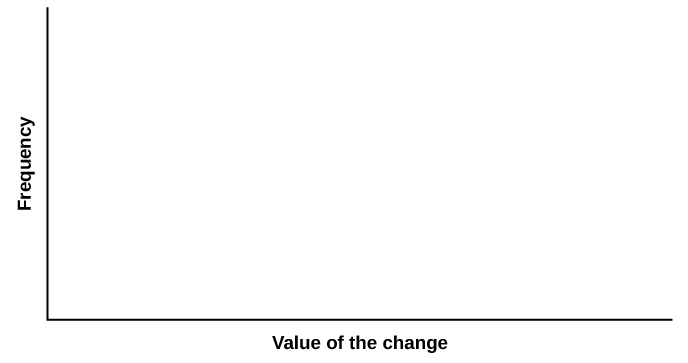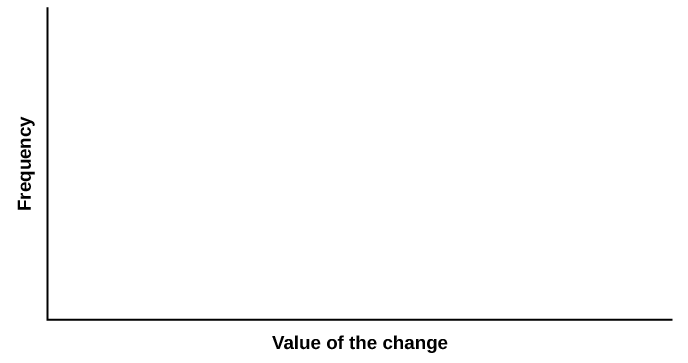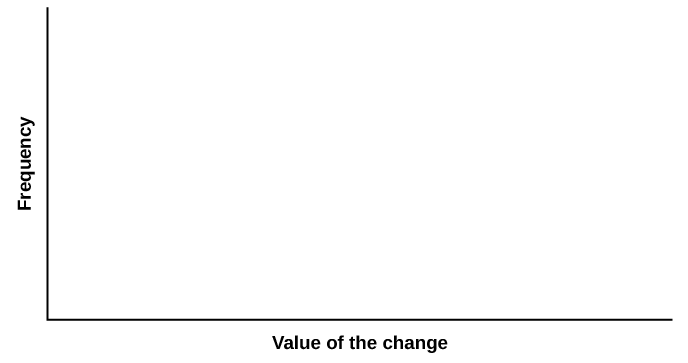Class Group Activities/Projects
Chapter 6 Project III: Central Limit Theorem (Pocket Change)
Central Limit Theorem (Pocket Change)
Class Time:
Names:
- The student will demonstrate and compare properties of the central limit theorem.
This lab works best when sampling from several classes and combining data.
- Count the change in your pocket. (Do not include bills.)
- Randomly survey 30 classmates. Record the values of the change in (Figure).
__________ __________ __________ __________ __________ __________ __________ __________ __________ __________ __________ __________ __________ __________ __________ __________ __________ __________ __________ __________ __________ __________ __________ __________ __________ __________ __________ __________ __________ __________ - Construct a histogram. Make five to six intervals. Sketch the graph using a ruler and pencil. Scale the axes.

- Calculate the following (n = 1; surveying one person at a time):
- [latex]\overline{x}[/latex] = _______
- s = _______
- Draw a smooth curve through the tops of the bars of the histogram. Use one to two complete sentences to describe the general shape of the curve.
Collecting Averages of Pairs
Repeat steps one through five of the section Collect the Data. with one exception. Instead of recording the change of 30 classmates, record the average change of 30 pairs.
- Randomly survey 30 pairs of classmates.
- Record the values of the average of their change in (Figure).
__________ __________ __________ __________ __________ __________ __________ __________ __________ __________ __________ __________ __________ __________ __________ __________ __________ __________ __________ __________ __________ __________ __________ __________ __________ __________ __________ __________ __________ __________ - Construct a histogram. Scale the axes using the same scaling you used for the section titled Collect the Data. Sketch the graph using a ruler and a pencil.

- Calculate the following (n = 2; surveying two people at a time):
- [latex]\overline{x}[/latex] = _______
- s = _______
- Draw a smooth curve through the tops of the bars of the histogram. Use one to two complete sentences to describe the general shape of the curve.
Collecting Averages of Groups of Five
Repeat steps one through five (of the section titled Collect the Data) with one exception. Instead of recording the change of 30 classmates, record the average change of 30 groups of five.
- Randomly survey 30 groups of five classmates.
- Record the values of the average of their change.
__________ __________ __________ __________ __________ __________ __________ __________ __________ __________ __________ __________ __________ __________ __________ __________ __________ __________ __________ __________ __________ __________ __________ __________ __________ __________ __________ __________ __________ __________ - Construct a histogram. Scale the axes using the same scaling you used for the section titled Collect the Data. Sketch the graph using a ruler and a pencil.

- Calculate the following (n = 5; surveying five people at a time):
- [latex]\overline{x}[/latex] = _______
- s = _______
- Draw a smooth curve through the tops of the bars of the histogram. Use one to two complete sentences to describe the general shape of the curve.
- Why did the shape of the distribution of the data change, as n changed? Use one to two complete sentences to explain what happened.
- In the section titled Collect the Data, what was the approximate distribution of the data? X ~ _____(_____,_____)
- In the section titled Collecting Averages of Groups of Five, what was the approximate distribution of the averages? [latex]\overline{X}[/latex] ~ _____(_____,_____)
- In one to two complete sentences, explain any differences in your answers to the previous two questions.

